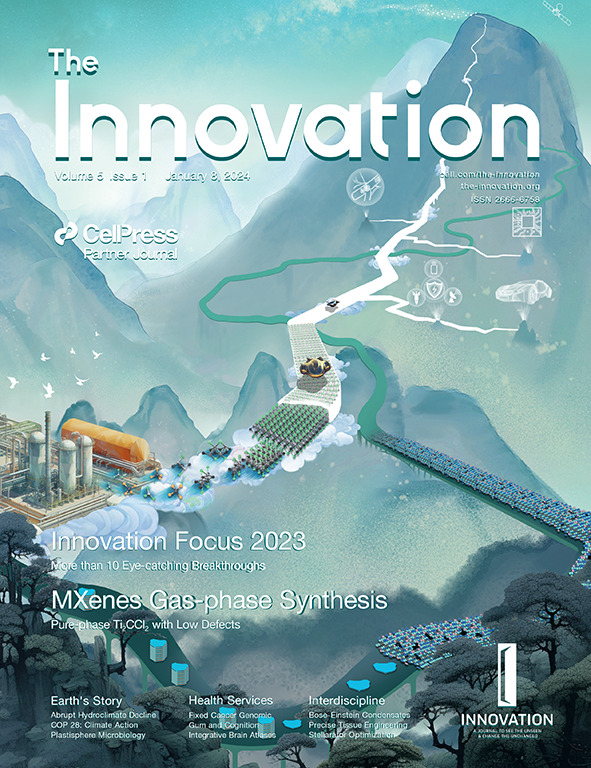Massive water production from lunar ilmenite through reaction with endogenous hydrogen
IF 33.2
1区 综合性期刊
Q1 MULTIDISCIPLINARY SCIENCES
引用次数: 0
Abstract
Finding water resources is a crucial objective of lunar missions. However, both hydroxyl (OH) and natural water (HO) have been reported to be scarce on the Moon. We propose a potential method for obtaining water on the Moon through HO formation via endogenous reactions in lunar regolith (LR), specifically through the reaction FeO/FeO + H → Fe + HO. This process is demonstrated using LR samples brought back by the Chang’E-5 mission. FeO and FeO are lunar minerals containing Fe oxides. Hydrogen (H) retained in lunar minerals from the solar wind can be used to produce water. The results of this study reveal that 51–76 mg of HO can be generated from 1 g of LR after melting at temperatures above 1,200 K. This amount is ∼10,000 times the naturally occurring OH and HO on the Moon. Among the five primary minerals in LR returned by the Chang’E-5 mission, FeTiO ilmenite contains the highest amount of H, owing to its unique lattice structure with sub-nanometer tunnels. For the first time, heating experiments using a transmission electron microscope reveal the concurrent formation of Fe crystals and HO bubbles. Electron irradiation promotes the endogenous redox reaction, which is helpful for understanding the distribution of OH on the Moon. Our findings suggest that the hydrogen retained in LR is a significant resource for obtaining HO on the Moon, which is helpful for establishing a scientific research station on the Moon.月球钛铁矿通过与内生氢反应大量产水
寻找水资源是月球任务的一个重要目标。然而,据报道月球上羟基水(OH)和天然水(HO)都很稀缺。我们提出了一种在月球上获取水的潜在方法,即通过月球碎屑(LR)中的内源反应形成 HO,特别是通过反应 FeO/FeO + H → Fe + HO。嫦娥五号任务带回的月球残积岩样本证明了这一过程。FeO和FeO是含有铁氧化物的月球矿物。太阳风中残留在月球矿物中的氢(H)可用于制造水。这项研究结果表明,1 克 LR 在 1200 K 以上的温度下熔化后可产生 51-76 毫克 HO。在嫦娥五号任务返回的LR五种主要矿物中,FeTiO钛铁矿的H含量最高,这是因为它具有亚纳米隧道的独特晶格结构。利用透射电子显微镜进行的加热实验首次揭示了铁晶体和HO气泡的同时形成。电子辐照促进了内源氧化还原反应,这有助于了解 OH 在月球上的分布。我们的研究结果表明,LR中保留的氢是在月球上获得HO的重要资源,这有助于在月球上建立科学研究站。
本文章由计算机程序翻译,如有差异,请以英文原文为准。
求助全文
约1分钟内获得全文
求助全文
来源期刊

The Innovation
MULTIDISCIPLINARY SCIENCES-
CiteScore
38.30
自引率
1.20%
发文量
134
审稿时长
6 weeks
期刊介绍:
The Innovation is an interdisciplinary journal that aims to promote scientific application. It publishes cutting-edge research and high-quality reviews in various scientific disciplines, including physics, chemistry, materials, nanotechnology, biology, translational medicine, geoscience, and engineering. The journal adheres to the peer review and publishing standards of Cell Press journals.
The Innovation is committed to serving scientists and the public. It aims to publish significant advances promptly and provides a transparent exchange platform. The journal also strives to efficiently promote the translation from scientific discovery to technological achievements and rapidly disseminate scientific findings worldwide.
Indexed in the following databases, The Innovation has visibility in Scopus, Directory of Open Access Journals (DOAJ), Web of Science, Emerging Sources Citation Index (ESCI), PubMed Central, Compendex (previously Ei index), INSPEC, and CABI A&I.
 求助内容:
求助内容: 应助结果提醒方式:
应助结果提醒方式:


